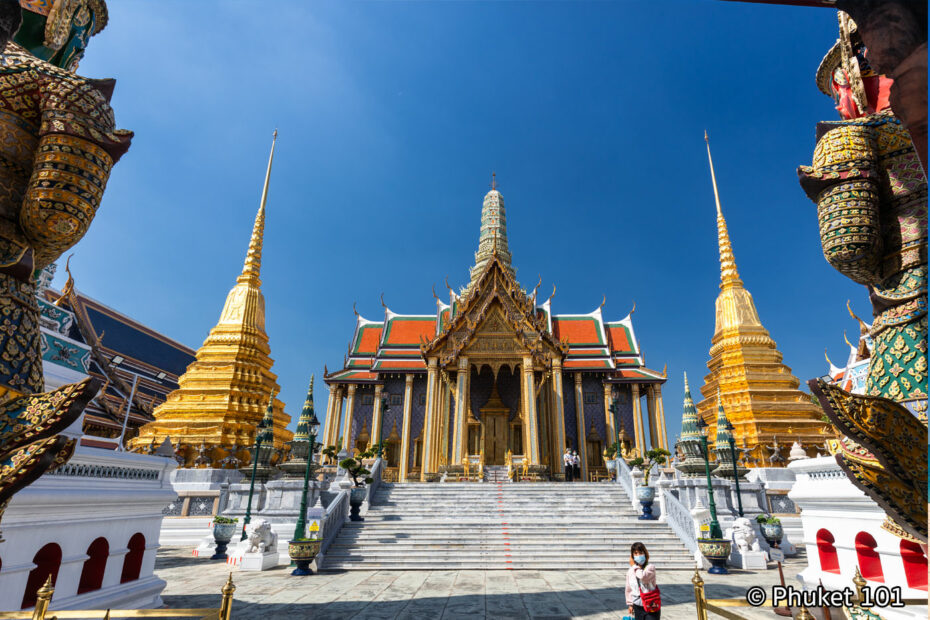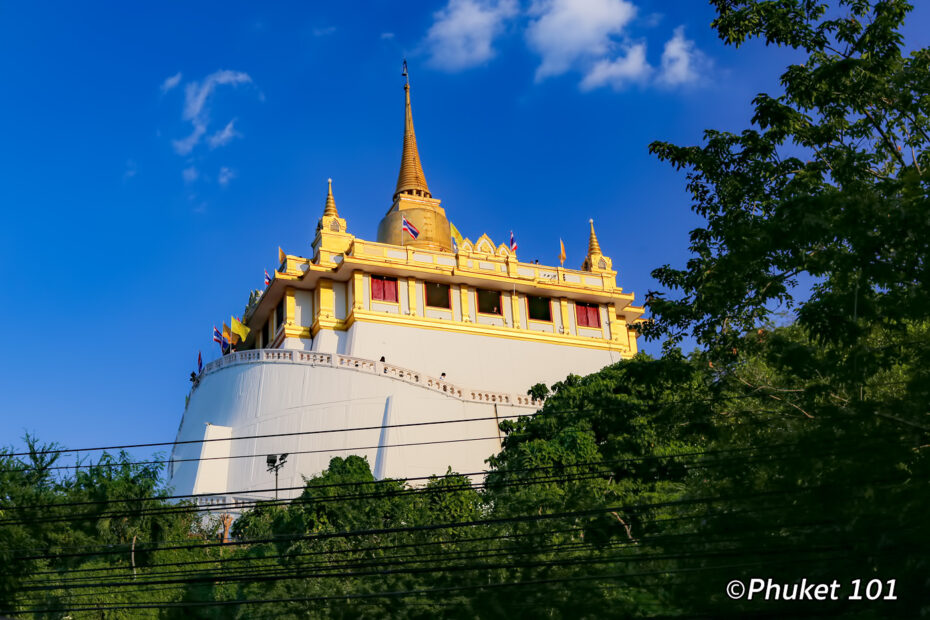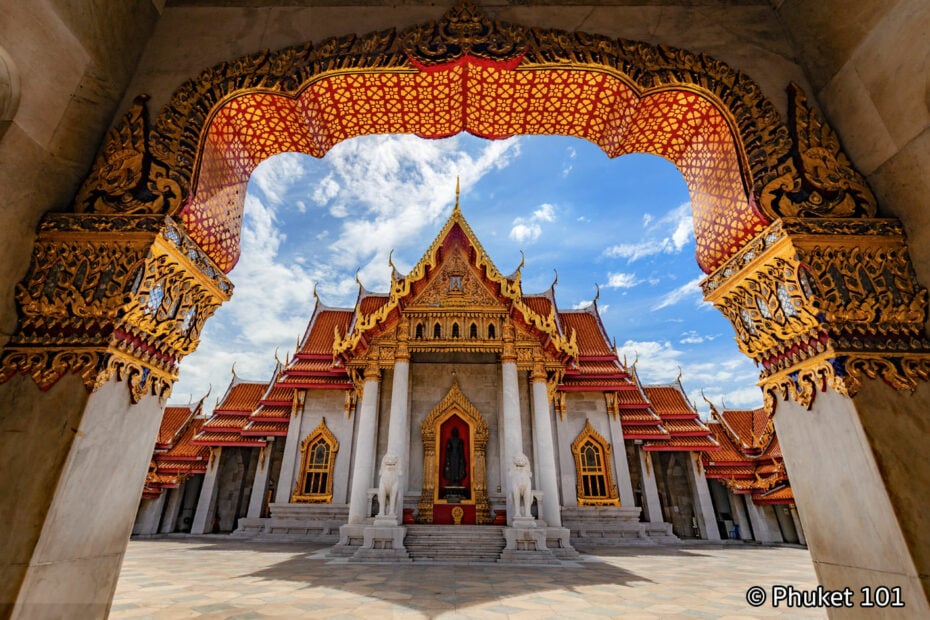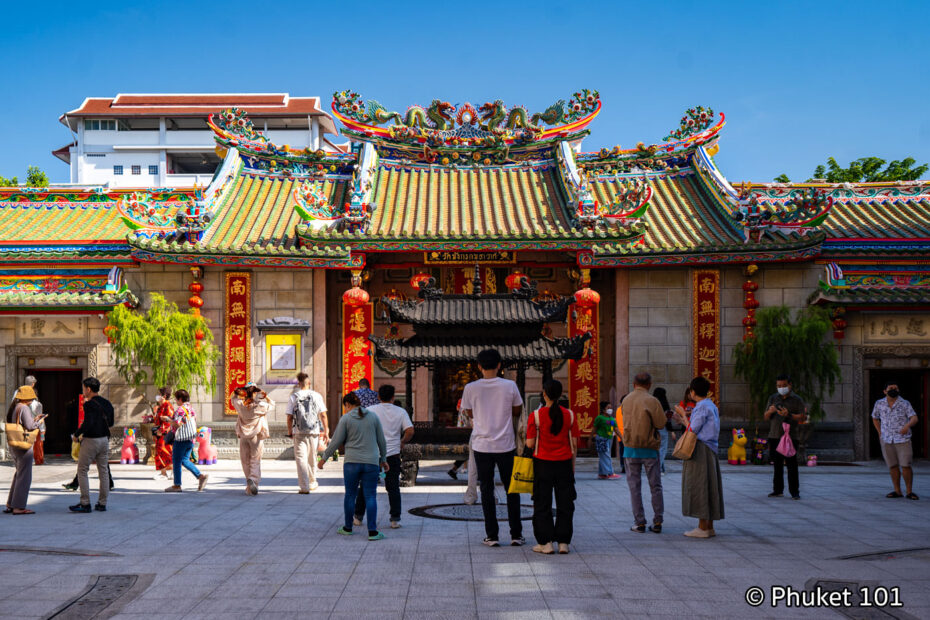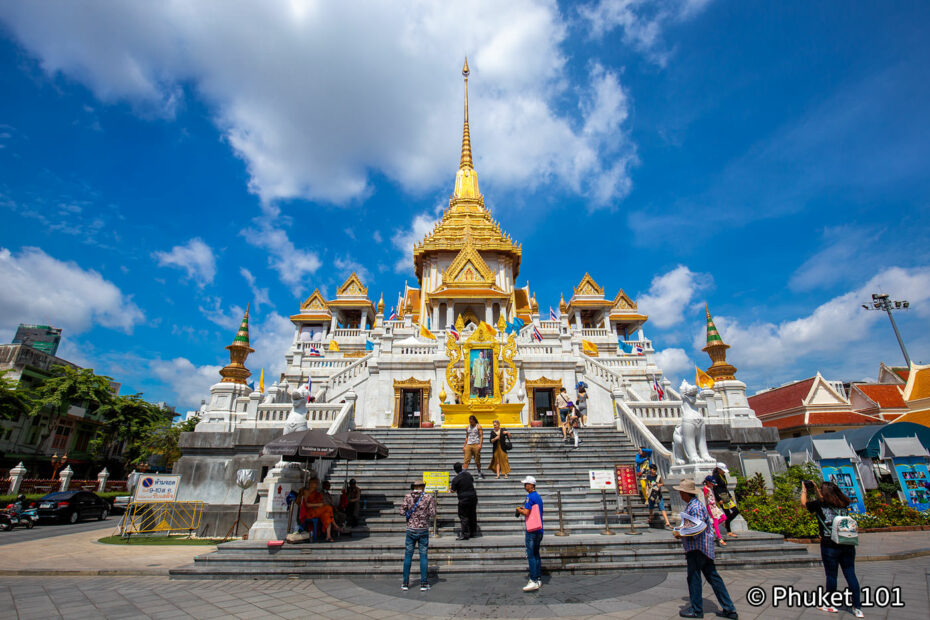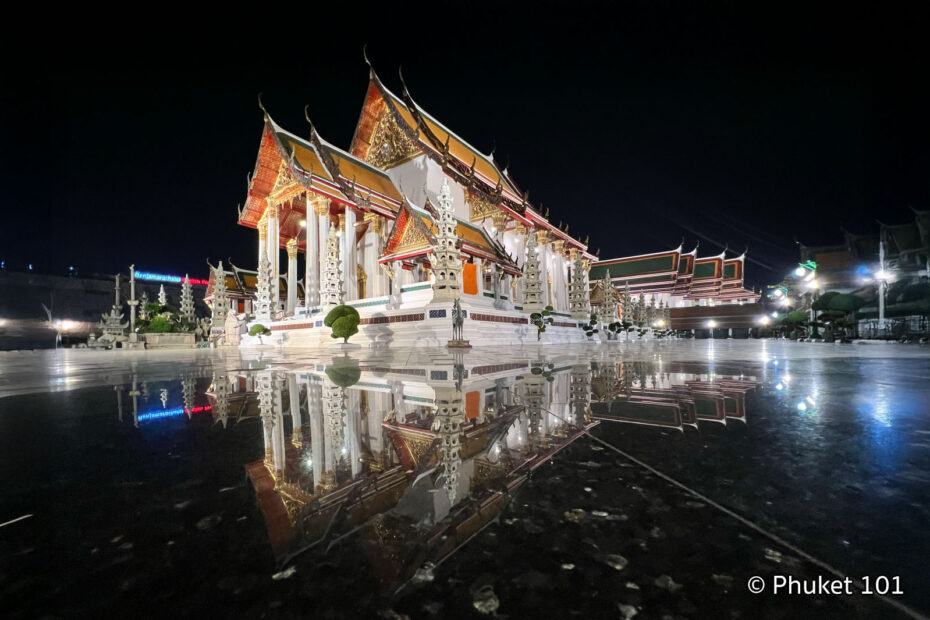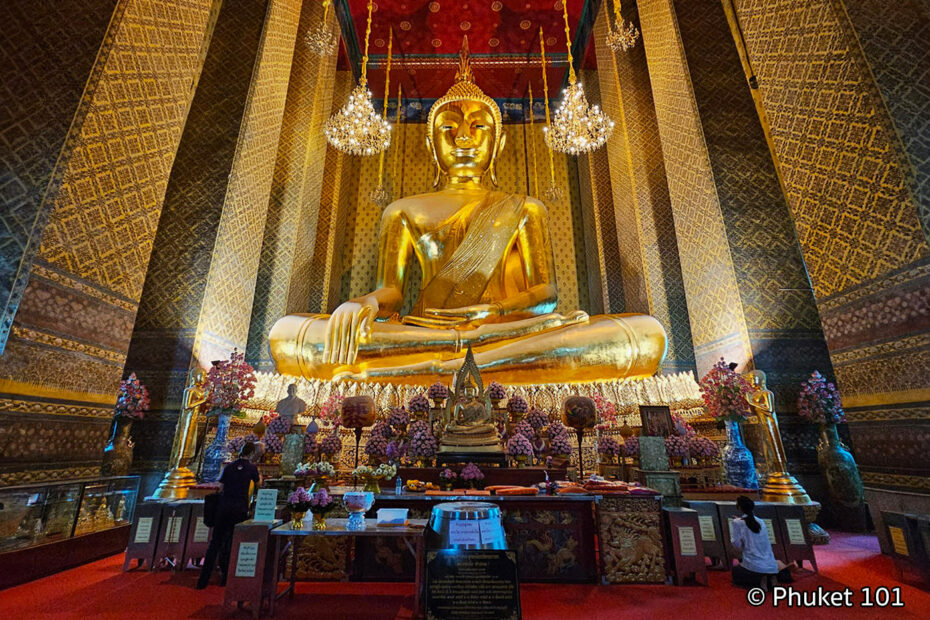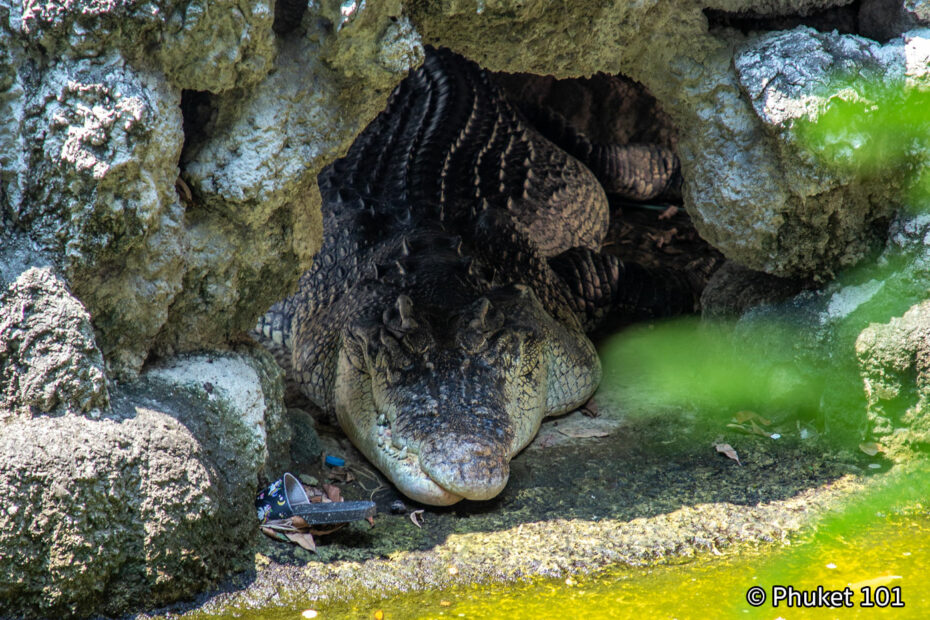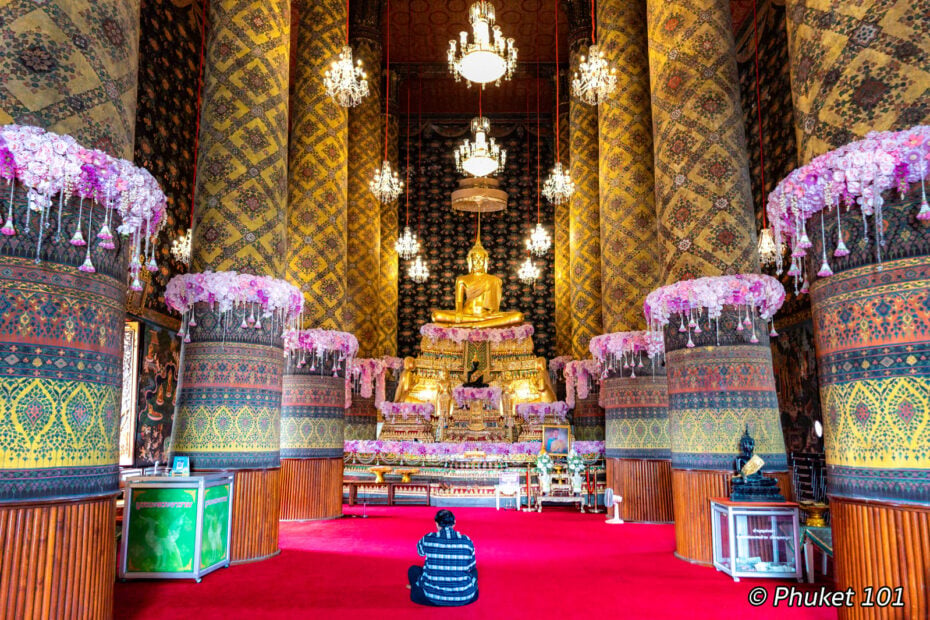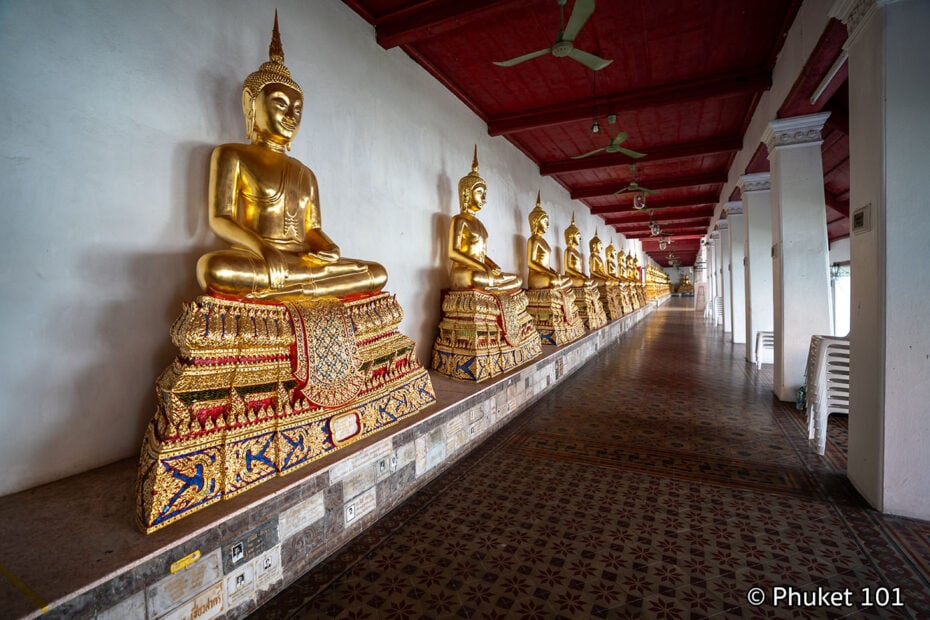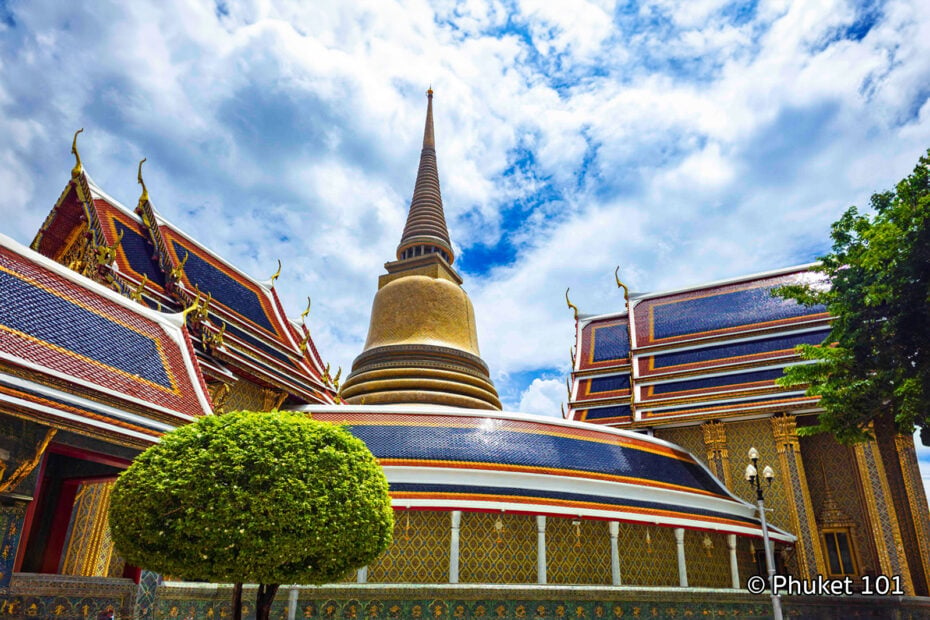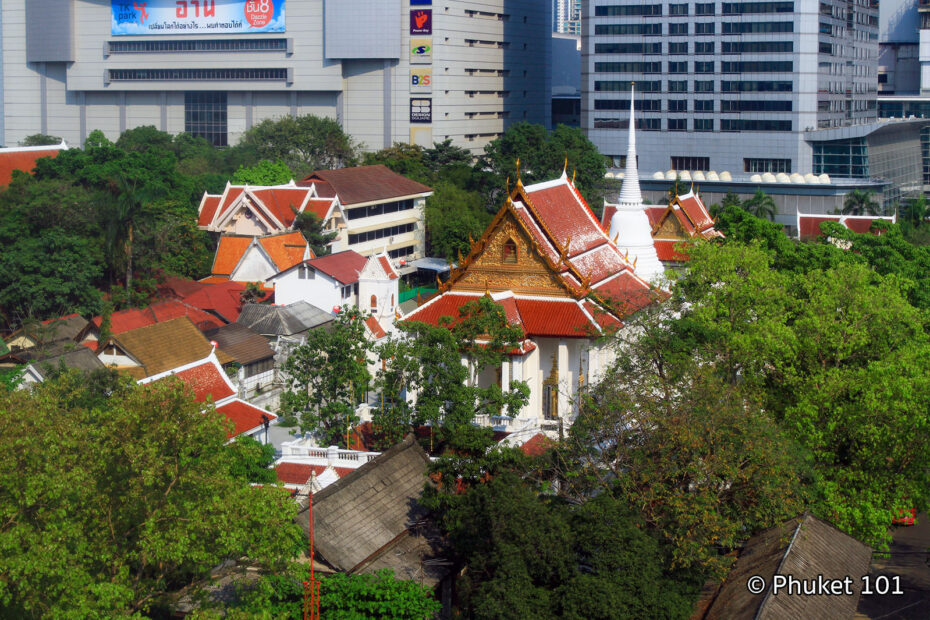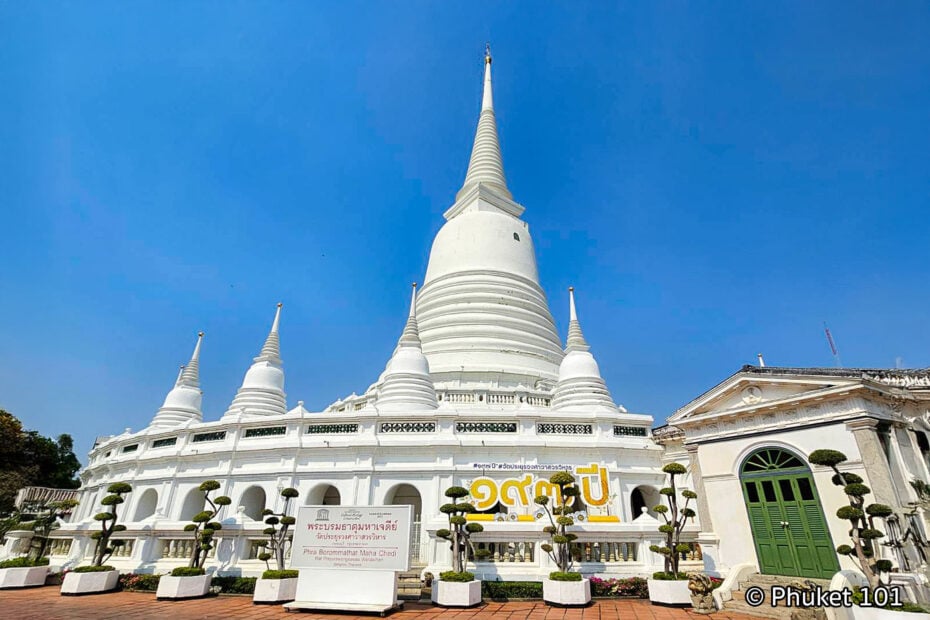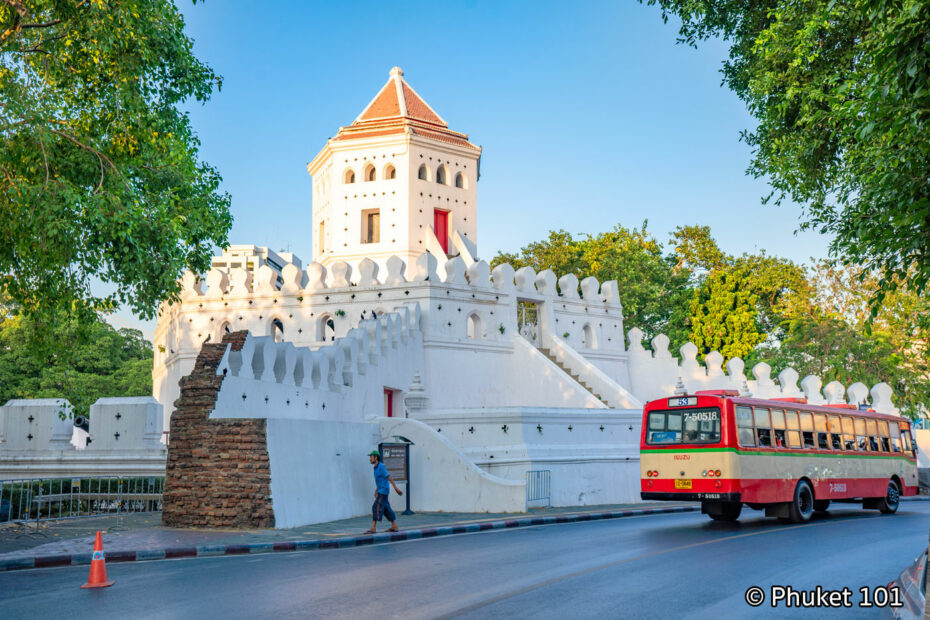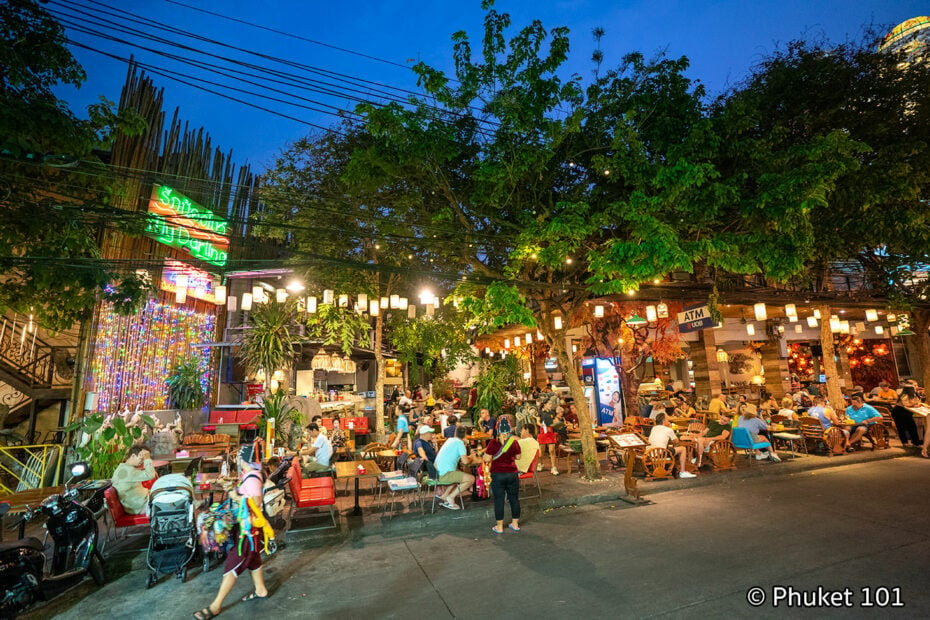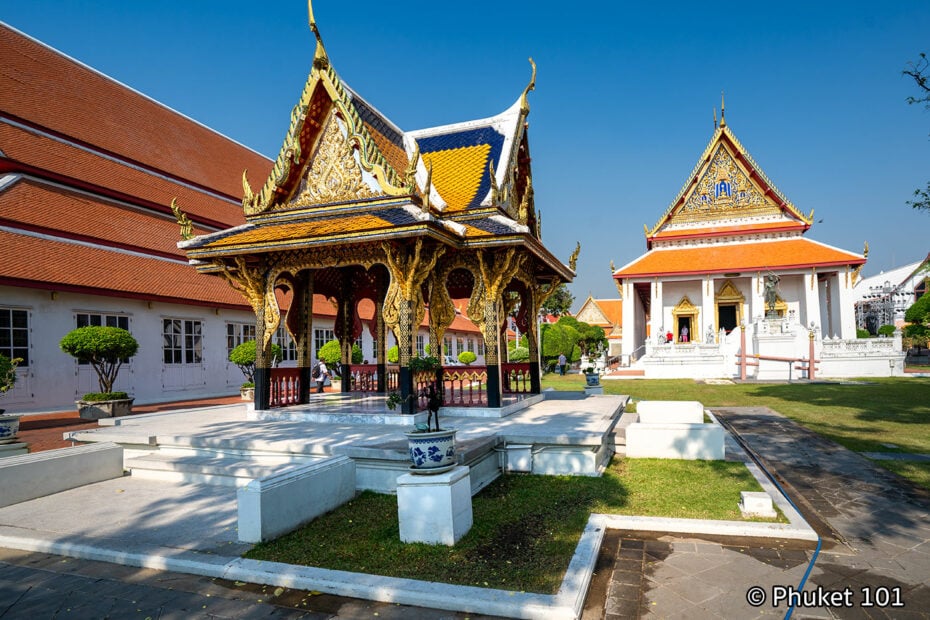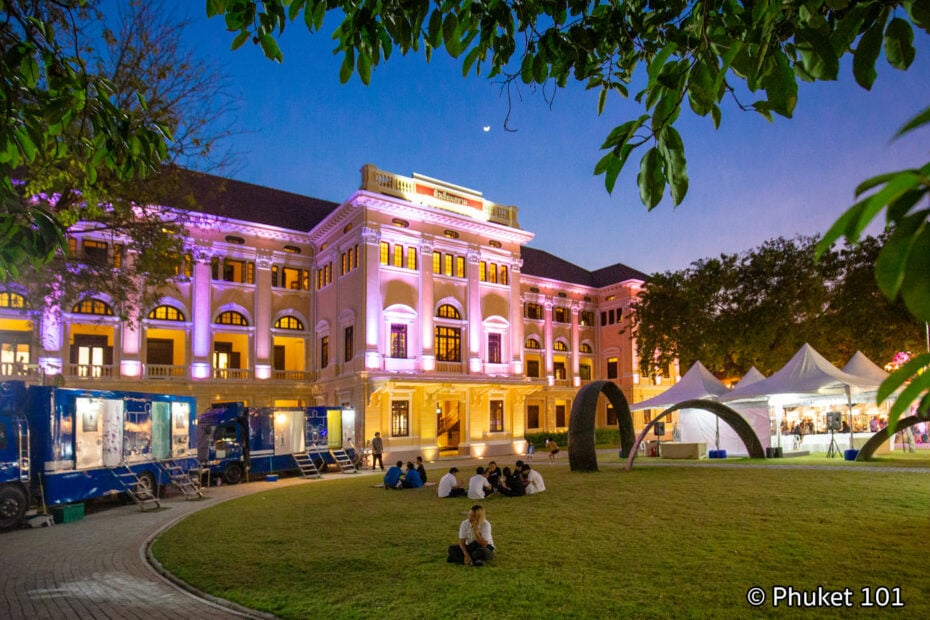Post Views: 1,545
Small Temple in Bangkok Old Town
Wat Ratchabophit Sathit Maha Simaram is one of those temples in Bangkok that surprised me. Tucked away near the Grand Palace, it was built in 1869 by King Rama V, and what makes it stand out is how it seamlessly blends classic Thai design with a touch of European style inside. The temple is quite small, but the whole place feels very peaceful and tidy, making it perfect for a light stroll.
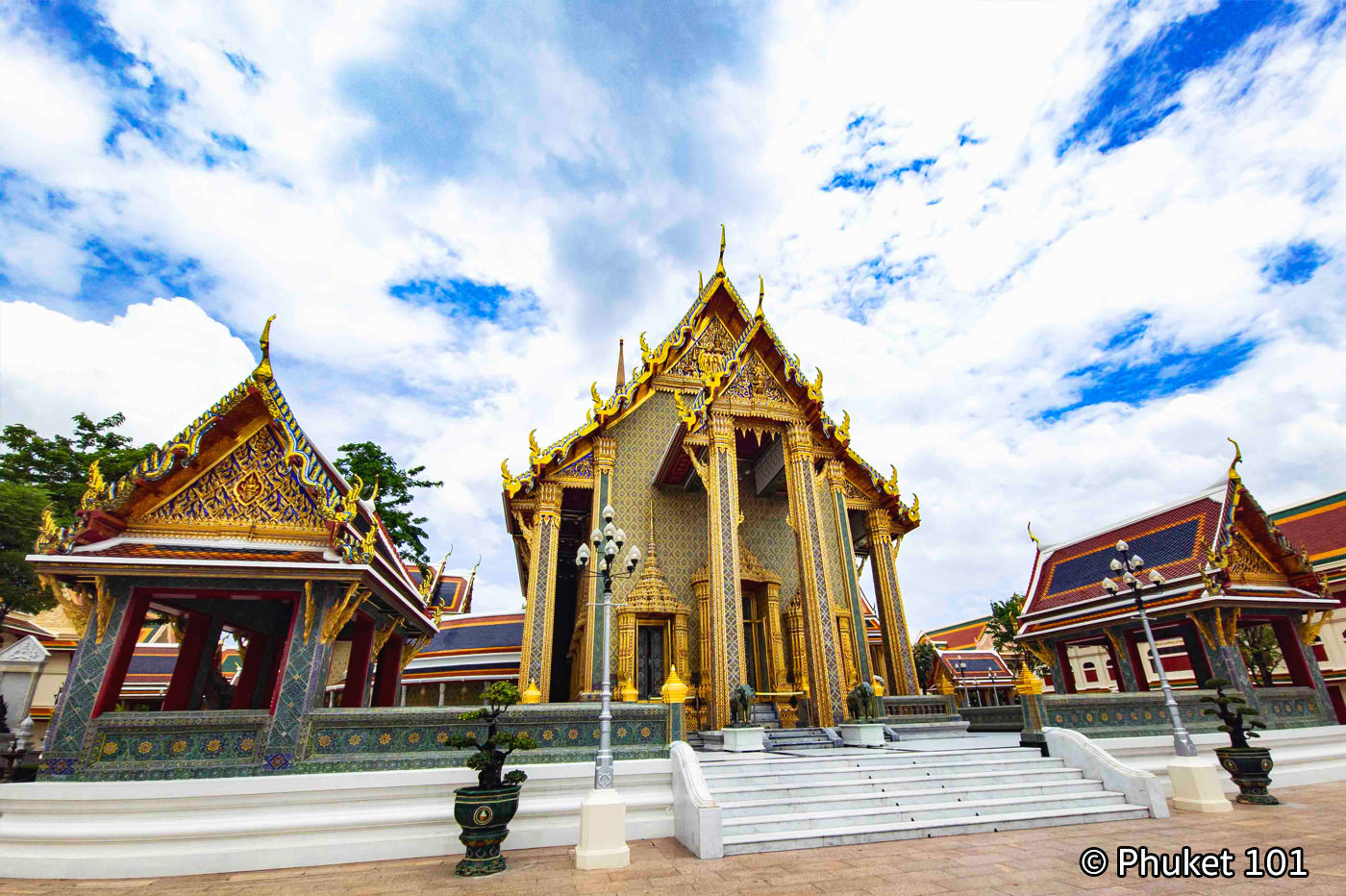
If you visit Wat Ratchabophit, make sure to check out the main chedi, it’s one of the most striking parts of the temple. Around the base, there are small Buddha statues in different poses. The chedi is right in the centre of the temple, giving the whole place a calm and balanced feel. Do note that the main chedi is usually closed off to the public and is only accessed by authorised access and monks; however, you may be lucky on that specific day that it’s open, so it’s worth taking a look.
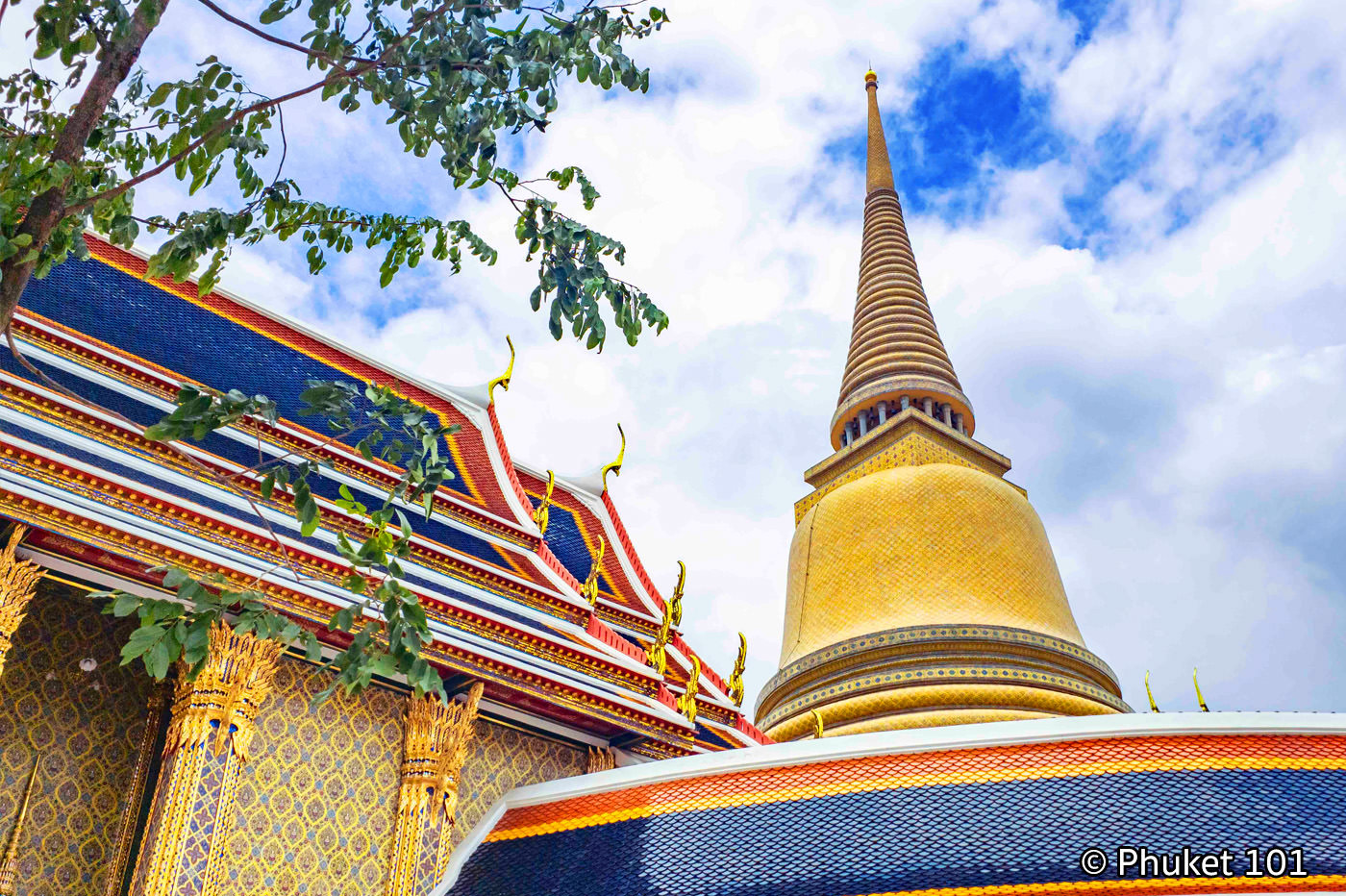
The temple grounds are incredibly peaceful and full of subtle details that make the place feel truly special. The walls along the walkway are decorated with golden garudas and lotus patterns. The main hall, or ubosot, looks traditional on the outside, but when you step in, it’s a nice surprise, with stained glass windows, soft colours, and a high ceiling with sky-like paintings. Right in the middle is the main Buddha statue, Phra Buddha Ankhiros, surrounded by marble and gold.
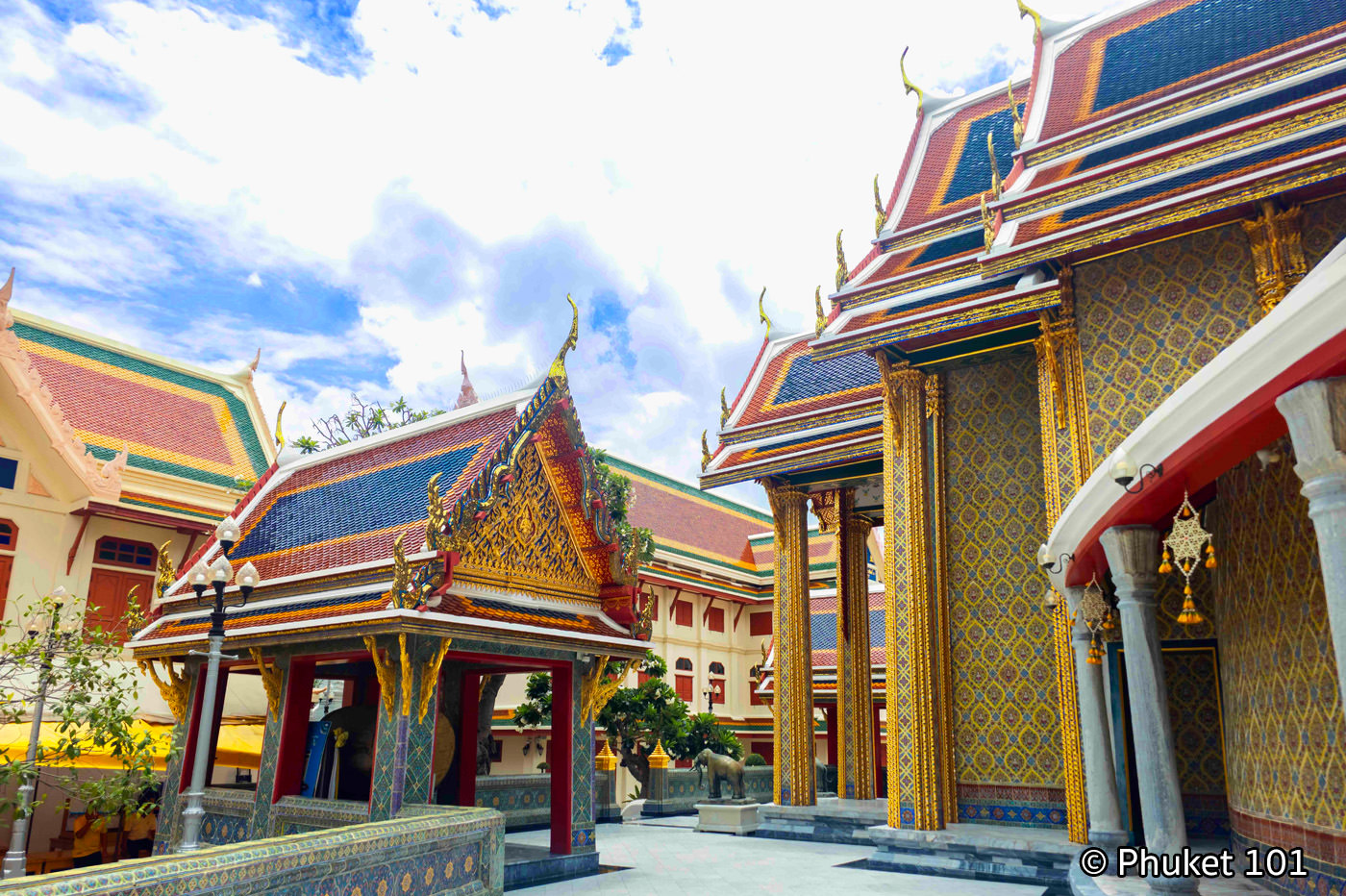
Everything inside is so well made. The floor tiles are imported from Italy, the pillars have mother-of-pearl and gold details, and the murals behind the altar tell stories from the Buddha’s life. The smell of incense and soft candlelight makes it feel super calm. If you walk toward the back, there’s also a quiet royal cemetery with small, beautifully designed tombs for members of the royal family. It’s a peaceful area that not many people notice.
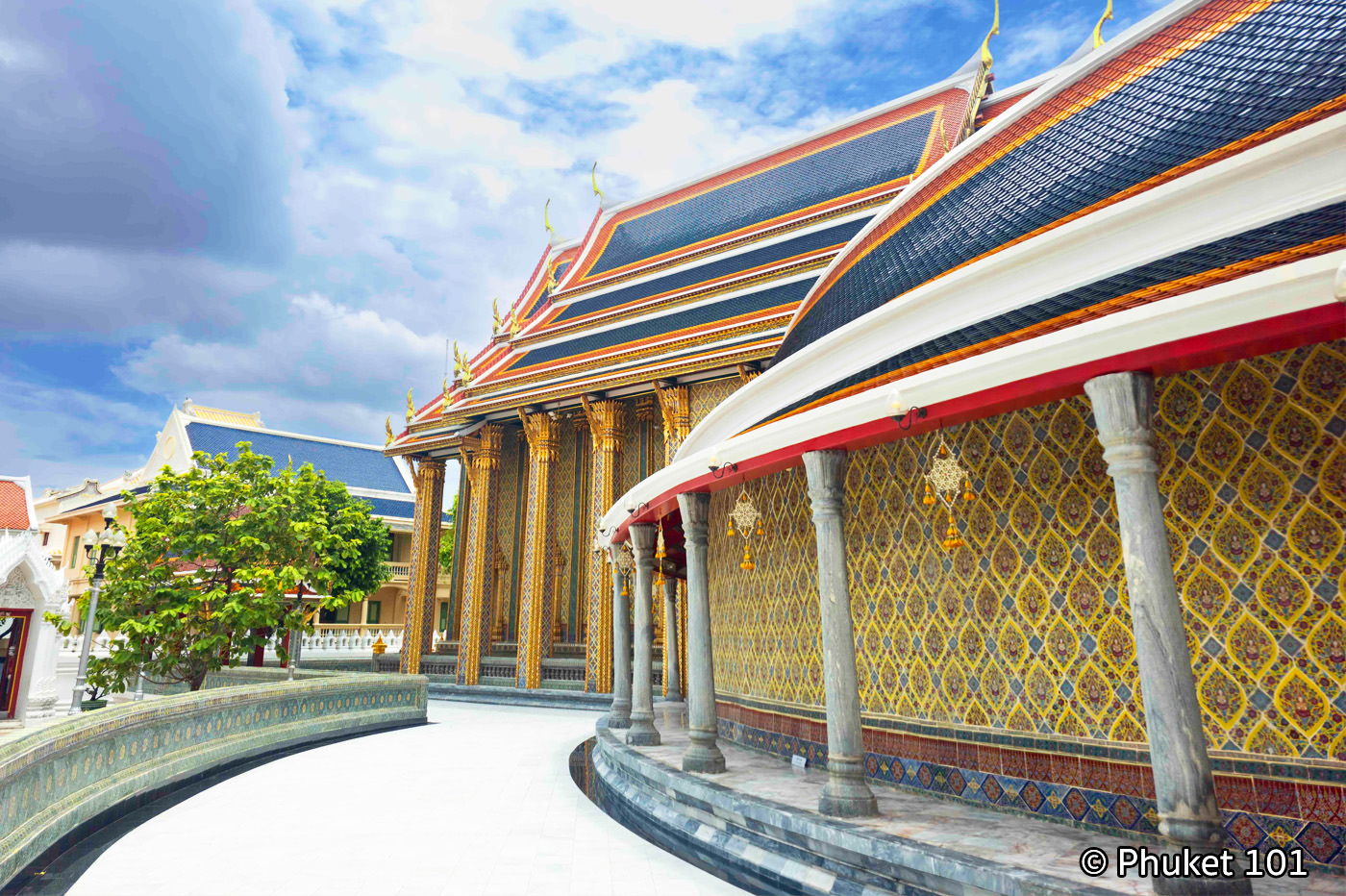
If you’re looking for a temple that’s peaceful and also really nice to walk around, Wat Ratchabophit is a great pick. You can visit any time, but it’s especially special during holidays like Asalha Puja or Visakha Bucha. That’s when you’ll hear monks chanting, see candles being lit, and feel the calm, spiritual vibe of the place. Whether you’re into old architecture, Thai culture, or just want a quiet break from the city, this one’s worth a visit.
How to get to Wat Ratchabophit?
By MRT (Subway)
Take the MRT Blue Line and alight at either Sam Yot or Sanam Chai stations. From Sam Yot, it’s approximately an 11-minute walk to the temple. From Sanam Chai, the walk is about 10 minutes. Both routes are pleasant and pass through historic areas of the city.
Wat Ratchabophit Info
Location: Bangkok Old Town
Address: 2 Fueang Nakhon Rd, Phra Nakhon, Bangkok 10200
Opening hours: 6 am – 6 pm
Wat Ratchabophit Map
Get the directions on your phone: Click Here
The Grand Palace of Bangkok, the Temple of the Emerald Buddha, and Wat Phra Kaew (or Wat Pra Kaew) are, without a doubt, the most famous landmarks in Bangkok, and ...
Read More
Wat Pho, the temple of the reclining Buddha or Wat Phra Chetuphon Wimon Mangkhalaram Rajwaramahawihan, is such an iconic landmark of Bangkok that it is on everyone's list of places ...
Read More
Wat Arun, also known as the temple of Dawn, is a significant landmark of Bangkok, built before 1656. It's much more modest than Wat Phra Kaew and the Grand Palace ...
Read More
Wat Saket Bangkok, more officially Ratcha Wora Maha Wihan, is a Buddhist temple in Rattanakosin, not far from the famous Khao San Road. The famous Golden Mount is easily visible ...
Read More
Loha Prasat, or Wat Ratchanatdaram Worawihan, is a superb temple in the old city of Bangkok, easily identified by its 37 golden spires. In the recent past, Loha Prasat was ...
Read More
Wat Benjamabophit (Wat Benchamabophit Dusitwanaram), also known as the Marble Temple, is a magnificent temple located in the Dusit district of Bangkok. It is one of the most beautiful and ...
Read More
Wat Mangkon Kamalawat is the best of the cultural things to do in Chinatown, Bangkok’s largest Chinese Buddhist temple. Built in 1846, the temple’s design is unmistakably Chinese ...
Read More
The striking spire of Wat Traimit protects a 5-metre-tall seated Buddha statue made of solid gold. Weighing in at 5.5 tonnes, the statue dates back to the 13th century and ...
Read More
Wat Suthat Thepwararam (Giant Swing) is a famous Buddhist temple dating back to the late 18th century. It’s mostly known for its towering red teak swing standing at 21 m ...
Read More
Wat Kanlayanamit is a magnificent temple in the Thonburi side of Chao Phraya River. It was constructed in 1825 during the reign of King Rama III on the bank of ...
Read More
Wat Chakrawat Rachawat Woramahawihan earned its nickname from the resident population of large reptiles. The legend goes that an especially belligerent man-eating croc with a missing eye was being hunted ...
Read More
Wat Hong is a peaceful temple on the Thonburi side of Bangkok that gives visitors a close look at everyday Buddhist life in Thailand. It is not as widely known ...
Read More
The best temple tours in Bangkok typically focus on the Grand Palace with Wat Phra Kaew, Wat Pho, and Wat Arun, arranged as half‑day routes with licensed guides and hotel ...
Read More
Wat Ratchabophit Sathit Maha Simaram is one of those temples that surprised me. Tucked away near the Grand Palace, it was built in 1869 by King Rama V, and what ...
Read More
Wat Pathum Wanaram Rachaworawihan is a peaceful temple hidden between Siam Paragon and CentralWorld, offering a quiet space of shady trees and monk chants just steps from Bangkok’s busiest shopping ...
Read More
Wat Prayoon, also referred to as Wat Prayurawongsawat Worawihan, is a 19th-century Buddhist temple placed near the Memorial Bridge in Bangkok's Thonburi district ...
Read More
Wat Mahathat Yuwaratrangsarit doesn’t always show up on first-timers’ lists, but it’s one of the oldest and most significant temples in Bangkok. You’ll find it tucked between the Grand Palace ...
Read More 








